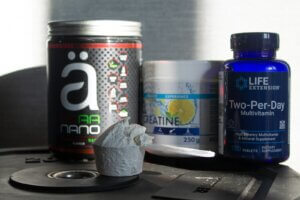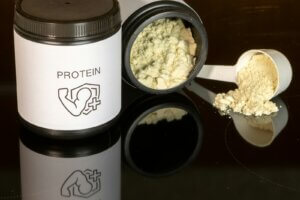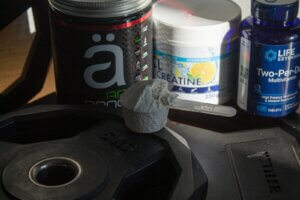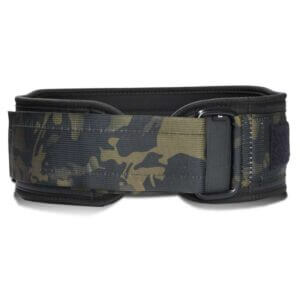How to do Sumo Deadlift High Pulls

Introduction:
The sumo deadlift high pull (SDHP) is a dynamic and powerful exercise that is a staple in many CrossFit workouts. Combining elements of the sumo deadlift and an explosive high pull, this movement effectively targets multiple muscle groups, making it an excellent compound exercise for building strength, power, and endurance. The SDHP is especially beneficial for athletes looking to improve their performance in lifts and functional movements. This guide will provide you with a detailed overview of the SDHP, including step-by-step instructions, equipment needed, scaling options, common mistakes to avoid, and the benefits of incorporating this exercise into your training routine.
Steps in the Sumo Deadlift High Pull movement
Starting Position:
- Stand with your feet wider than shoulder-width apart (sumo stance).
- Place a barbell on the floor in front of you, positioned over the mid-foot.
- Bend at the hips and knees to grip the barbell with an overhand grip, hands about shoulder-width apart.
- Keep your back straight, chest up, and core engaged.
The Lift:
- Initiate the lift by driving through your heels and extending your hips and knees simultaneously.
- Keep the barbell close to your body as you lift, maintaining a straight back and engaged core.
- As the barbell passes your knees, begin to accelerate the movement by forcefully extending your hips.
High Pull:
- Once the barbell reaches mid-thigh, initiate the high pull by shrugging your shoulders and pulling the barbell upward with your arms.
- Keep your elbows higher than your wrists and continue pulling until the bar reaches chest height.
The Descent:
- Reverse the movement by lowering the barbell back down to the starting position in a controlled manner.
- Ensure your back remains straight and core engaged as you lower the barbell.
Repeat:
- Perform the desired number of repetitions, maintaining proper form throughout each rep.
What Equipment is needed
- Barbell: The primary piece of equipment for this exercise.
- Weight Plates: To adjust the resistance according to your strength and fitness level.
- Lifting Shoes: Optional, but can provide better stability and support.
- Lifting Belt
- Chalk
- Lifting Straps
To perform the SDHP effectively, having the right equipment is paramount. A standard Olympic barbell is typically used for this exercise, offering the appropriate weight distribution and grip diameter. Investing in high-quality weight plates allows for adjustable resistance, catering to various strength levels. Lifting shoes with a slight heel elevation can enhance stability and improve hip alignment during the lift. Additionally, using chalk can improve grip, especially during higher-repetition sets. For those looking to protect their hands and enhance grip security, weightlifting gloves or straps can be beneficial. Ensuring you have access to a well-maintained lifting platform can also provide a safe and stable environment for performing the SDHP. Equipping yourself with these tools not only enhances performance but also contributes to safety and injury prevention.
Check out the Equipment subsite for more tools, tips, and inspiration.
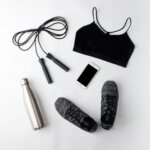
Shop Fitness gear now on Amazon
See Amazons extensive range of workout gear here. (Affiliate Link)
Scaling Options:
To gradually build strength and proficiency, consider the following scaling options:
- Lighter Weight: Use a lighter barbell or fewer weight plates to decrease the intensity.
- Kettlebell or Dumbbell Sumo Deadlift High Pull: Perform the movement with kettlebells or dumbbells instead of a barbell to make it more accessible.
Common Mistakes to Avoid:
- Rounded Back: Ensure your back remains straight throughout the movement. Engage your core and keep your chest up.
- Early Arm Pull: Avoid initiating the high pull too early. Focus on extending your hips fully before pulling with your arms.
- Wide Grip: Keep your hands at shoulder-width to maintain proper mechanics and avoid unnecessary strain on your shoulders.
Benefits of the Movement:
- Total Body Workout: Engages multiple muscle groups, providing a comprehensive workout.
- Power Development: Enhances explosive strength and power, beneficial for other lifts and athletic performance.
- Functional Strength: Improves functional movement patterns, aiding in everyday activities and sports.
- Calorie Burn: Due to its high-intensity nature, the SDHP can help in burning calories and improving cardiovascular fitness.
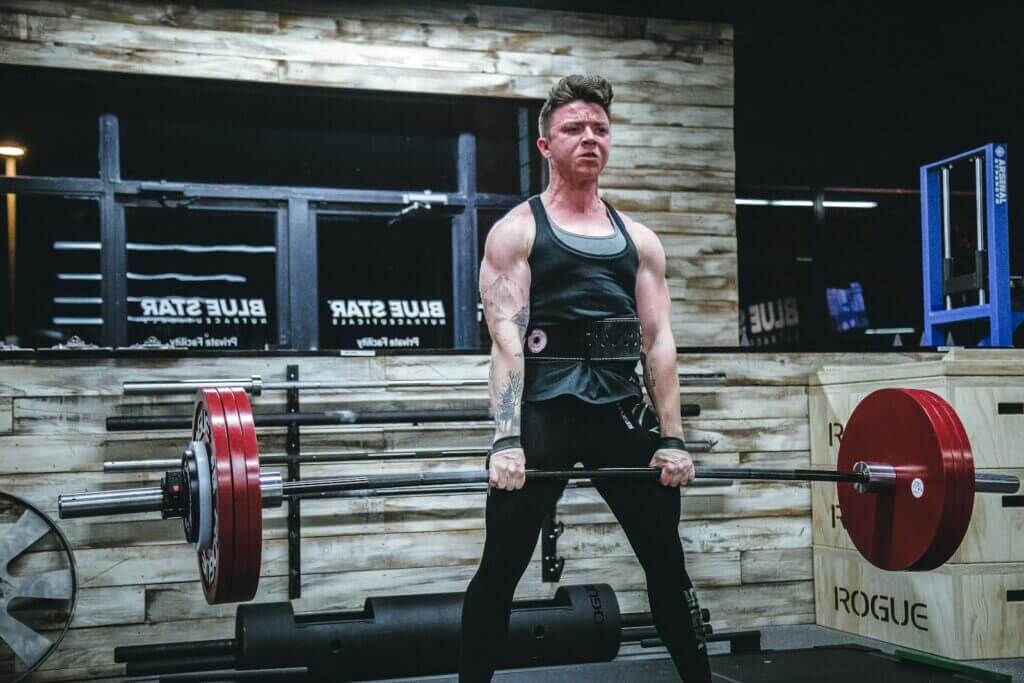
Which Muscles Are Worked:
During this exercise, the following muscle groups are engaged:
Primary Muscles: Quadriceps, Hamstrings, Glutes, Deltoids, Trapezius
Secondary Muscles: Core (abdominals and lower back), Forearms (grip strength)
Alternative Similar Movements:
If you’re seeking variation or targeting specific muscle groups, consider incorporating these alternative exercises:
- Sumo Deadlift: Focuses on lower body strength without the high pull component.
- High Pull: Targets the upper body, specifically the shoulders and traps, without the deadlift.
- Power Clean: Another explosive movement that works on developing strength and power, incorporating a clean rather than a high pull.
- Kettlebell Swing: Offers a similar hip drive and explosive movement pattern, using a kettlebell.

Shop Fitness gear now on Amazon
See Amazons extensive range of workout gear here. (Affiliate Link)
Safety Precautions and Injury Prevention
Before incorporating the SDHP into your workout routine, it’s crucial to understand the safety measures necessary to prevent injuries. Due to the compound nature of this exercise, improper form can lead to strains, particularly in the lower back and shoulders. To mitigate these risks, always begin with a thorough warm-up that includes dynamic stretches targeting the hips, hamstrings, and shoulders. Focus on maintaining a neutral spine throughout the movement; avoid rounding or overextending your back. Engage your core muscles to provide additional support and stability. It’s advisable to start with lighter weights to master the technique before progressing to heavier loads. If you’re new to the SDHP, consider seeking guidance from a certified fitness professional to ensure proper form and execution. Remember, prioritizing safety not only prevents injuries but also promotes long-term progress in your fitness journey.
Programming the Sumo Deadlift High Pull into Your Workout
Integrating the SDHP into your training regimen can yield significant benefits, but it’s essential to do so thoughtfully. Given its intensity, the SDHP is well-suited for inclusion in high-intensity interval training (HIIT) sessions or as part of a strength circuit. For strength development, consider performing 3-4 sets of 6-8 repetitions with adequate rest between sets to maintain form and power output. Alternatively, for endurance and conditioning, incorporate the SDHP into timed circuits, performing higher repetitions with lighter weights. Pairing the SDHP with complementary exercises, such as push-ups or rowing, can create a balanced full-body workout. As with any exercise, it’s crucial to listen to your body and adjust the volume and intensity according to your fitness level and goals.
Progressions and Variations to Enhance Proficiency
As you become more comfortable with the SDHP, incorporating progressions and variations can help prevent plateaus and promote continuous improvement. One progression is to increase the load incrementally, challenging your strength capacity while maintaining proper form. Alternatively, tempo variations, such as slowing down the eccentric (lowering) phase, can increase time under tension and promote muscle growth. For variation, consider the kettlebell sumo deadlift high pull, which can enhance grip strength and unilateral stability. Another option is the single-arm dumbbell high pull, focusing on unilateral strength and addressing potential muscle imbalances. Incorporating these progressions and variations ensures that your training remains dynamic and effective, catering to evolving fitness levels and goals.
Real-Life Applications and Functional Benefits
The SDHP is not only a potent strength and conditioning exercise but also offers functional benefits that translate into daily activities and athletic endeavors. The movement pattern of the SDHP mimics lifting objects from the ground to an elevated position, a common task in various sports and daily life. By training this movement, you enhance your ability to perform such tasks efficiently and safely. Athletes, particularly those involved in sports requiring explosive power and hip drive, such as rowing, wrestling, and football, can benefit from the SDHP’s emphasis on hip extension and upper body engagement. Moreover, the coordination and timing developed through the SDHP can improve neuromuscular efficiency, contributing to better overall athletic performance. Incorporating the SDHP into your routine not only builds strength and power but also enhances functional capabilities that extend beyond the gym.

Shop Fitness gear now on Amazon
See Amazons extensive range of workout gear here. (Affiliate Link)
Q&A for Sumo Deadlift Highpull
Are sumo deadlift high pulls safe?
Sumo deadlift high pulls are safe when performed with proper form and appropriate weight. Always warm up properly, engage your core, and ensure your back stays straight to minimize the risk of injury.
What are common faults in sumo deadlift high pull?
Common faults include rounding the back, pulling with the arms too early, and using an excessively wide grip. Focus on maintaining a straight back, engaging the hips fully before the high pull, and keeping hands shoulder-width apart to avoid these mistakes.
What muscles do sumo deadlift high pull kettlebells work?
Sumo deadlift high pull kettlebells work the quadriceps, hamstrings, glutes, deltoids, and trapezius. Secondary muscles include the core and forearms, which assist in stability and grip strength.
What are the benefits of sumo deadlift high pulls?
Sumo deadlift high pulls offer a total body workout, power development, and functional strength improvements. They also enhance calorie burn and cardiovascular fitness due to their high-intensity nature.
What is a good substitute for sumo deadlift high pull?
Good substitutes include the sumo deadlift, high pull, power clean, and kettlebell swing. These exercises target similar muscle groups and provide variation in your training routine.
How to teach the sumo deadlift high pull?
To teach the SDHP, start with the basics of the sumo deadlift and ensure proper hip hinge mechanics. Progress to the high pull portion by emphasizing the timing of the hip extension before pulling with the arms. Demonstrate each phase separately and then together for a complete movement.
Is sumo deadlift high pull bad for your shoulders?
Sumo deadlift high pulls can be safe for your shoulders if performed correctly. Avoid excessive weight and improper form, such as pulling too early with the arms or using a grip that is too wide, to prevent shoulder strain.
Conclusion:
Incorporating the sumo deadlift high pull into your CrossFit training routine can enhance your overall strength, power, and functional fitness. With consistent practice and attention to form, you’ll find this exercise to be a valuable addition to your workouts. Grab that barbell, perfect your technique, and start reaping the benefits of this dynamic movement!

Shop Fitness gear now on Amazon
See Amazons extensive range of workout gear here. (Affiliate Link)

🏋️ Written by: Mike Kerr
Mike is the founder of Strengthguides.com and a certified CrossFit Level 1 Trainer (CF-L1) and certified Kettlebell Instructor with over 10 years of experience in functional fitness. He specializes in developing programs that maximize performance without sacrificing mobility. Mike Kerr is passionate about making complex training methodologies comprehensible and safe for everyone.

